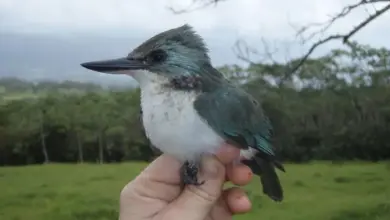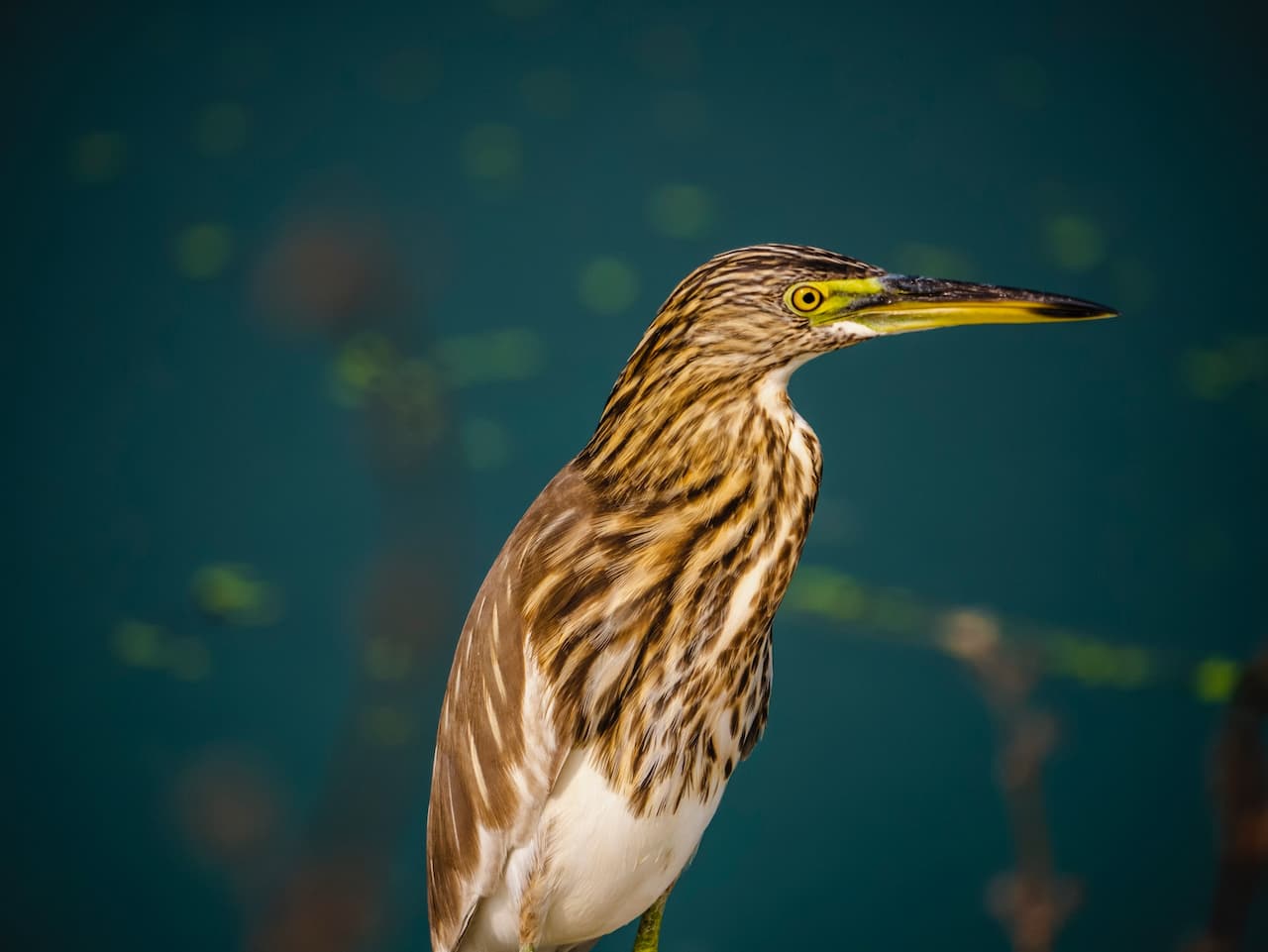Can Flamingos Swim?
Can Flamingos Swim? Do they have webbed feet?
If you have ever seen a flamingo wading in the water, you might have thought: can flamingos swim too? Or do they just stand in the water and enjoy whatever is available to eat there?
Flamingos are fascinating creatures. Standing on one leg, feeding in water with their heads upright and sporting a beautiful pink hue, the flamboyance of Pink Flamingos is undoubtedly a sight to behold!
While everyone knows that flamingos can stand in water, a fascinating question that often comes up is: Can flamingos swim too?
The answer is yes, they can – and they can do a lot more than just that! Read on to find out more.

Webbed Feet of Flamingos Help Them Swim
Yes, if they need to, flamingos can swim. They are water birds; their bodies have evolved to be able to swim as well as stand and wade in the water.
For one thing, they have webbed feet, which help Flamingos paddle while swimming in deeper waters.
Their webbed feet also help flamingos wade in water bodies with a muddy bottom. The webbed feet spread their weight over a greater surface area. This way, they don’t sink in, and flamingos can be more agile when needed.
While they can swim, flamingos prefer to stand as long as the water level is manageable. They have longer legs than other aquatic birds and animals, which gives them that extra edge to stand.
Depending on the breed, flamingo legs can be as long as 32 to 49 inches, which is about 2/3rd of their entire body height!
Here’s a video of a flamingo swimming if you still doubt us!
Why Do Flamingos Swim?
When they head out into deep waters, their long legs cannot reach the bottom anymore. That’s when they bring out their swimming skills and use their webbed feet and start paddling.
Flamingos use swimming to move from one location to another in a water body. They will do so in search of a better (or safer) place to feed.
Flamingos are short-distance swimmers. For longer distances or to move from one water body to another, they fly.
How Fast Can They Swim?
We know that flamingos can swim well when they need to. However, there is no research or study on how fast they can swim as of now.

Can Their Babies Swim as Well?
Yes, baby flamingoes (called Flaminglets) can also swim. Within a few weeks of hatching, they experiment with both walking and swimming. In fact, flaminglets learn to swim before they leave the nest; it’s a key life skill for them.
When flaminglets enter the water, they are able to float naturally and paddle by instinct. Scientists believe that this helps to strengthen their feet as well.
Here’s a bunch of cute baby flamingos learning the ropes of swimming:
Do They Prefer To Wade or Swim?
Flamingos tend to prefer wading over swimming. They have evolved to wade in the water for long periods of time. Their long legs are of great help. Flamingos swim only when it is necessary.
In fact, they are a part of a larger group of birds known as “wading birds.” These include Storks, Cranes, Herons, Egrets, Spoonbills, Ibises, and Rails.
You can spot most of these wading birds along the edges of lakes and lagoons, wading in shallow water and using their long bills (or hooked bills, in the case of the flamingo) to chow down upon fish, frogs, toads, and insects.
How Does a Flamingo’s Webbed Feet Help in Wading?
Till now, we only talked about webbed feet being useful for swimming (a la ducks). However, webbed feet also help flamingos in wading.
When they push back water while walking, the triangular shape and the webbing between the toes help to push more water than feet with no webbing.
This makes it easier for the flamingos to move in water.

Can They Dive Underwater?
There is no evidence of Flamingos diving. Flamingos can float on the surface of the water keeping their heads dipped for a long time. However, you cannot call this diving.
Can They See Underwater?
Yes, you can easily spot flamingos with their heads underwater and eyes open in search of food.
Flamingos have good eyesight underwater, as you can easily figure out from this underwater feeding video of theirs.
Can Flamingos Hold Their Breath Underwater?
Yes, flamingos can hold their breath underwater. They do this while feeding. Since Flamingos breathe in air, they have to hold their breath each time they put their heads underwater to hunt for food.
After dipping their heads in the water, they hold their breath for several minutes at a time, then come back up to catch a quick breath, go down again, and repeat the process.
Can Flamingos Sink if They Don’t Move?
Flamingos and flaminglets would not sink in water. Their weight ranges from around 5 to 10 pounds, which is very light compared to the volume of their body. Therefore, just like a boat, flamingos simply don’t sink.
Moreover, their feathers are waterproof. Regular preening makes their feathers waterproof.
Preening is a process that’s somewhat like putting makeup on yourself. Most birds preen, apart from a few like owls, hawks, parrots, and pigeons.
First, they rub their cheeks at a point near their tails to get the oily secretion from a gland called the Uropygial gland onto their cheeks.
They then rub their cheeks using their incredibly flexible necks all over their feathers.
This secretion also contains pigmentation that makes their bodies look brighter, which helps males in attracting mates during the mating season.
Their lightweight waterproof feathers let flamingos be in the water without getting wet.

Can Flamingos Walk on Water?
No, they can’t! This surprising and very annoying question deserves to be put to rest once and for all, so here we go:
Flamingos’ webbed feet do help them walk on soft mud, which might appear like they are walking on water if the water is quite shallow.
Flamingos can, however, run on water for a short time, thanks to their webbed feet. They do this as a way to gain the necessary thrust to help them take off a flight. Here you can see a flock of flamingos running on water to take off.
Do They Bathe?
Yes, Flamingos bathe. They typically do so only in shallow freshwaters and do the same by soaking their entire bodies in it. Observing a bathing Flamingo is an unusual sight; an onlooker may believe the bird is in great distress!
Can Flamingos Sleep on Water?
Flamingos spend a lot of time floating on water, so it is possible for them to sleep on the water.
However, conventionally flamingos just sleep while standing on one leg. Standing in this position is easier for them and is also helpful in maintaining their body temperature.
Frequently Asked Questions
What are three interesting facts about flamingos?
Even though Flamingos are social birds and are rarely spotted alone, they are rather picky about who to befriend. According to research, flamingos make friends for life, just like we do (or sometimes, we don’t).
Caring for their newborn causes parent flamingos to turn white from pink. On the other hand, their babies are born white and eventually turn pink.
Can flamingos swim and fly?
Why is flamingo water so toxic?
Flamingos feed on these bacteria, so living in this water is just part of getting their daily bread. However, these bacteria are poisonous to other life forms.
Why are flamingos stinky?
Not only this, Flamingos practice Urohydrosis, which means that they defecate on their legs in an attempt to cool their body with evaporative cooling. Since no one loves to smell the stench of poop, flamingos do appear stinky to humans.
Summing Up
Flamingos are utterly fascinating creatures. They can do it all: swim, fly, walk, sleep and even run across water. We hope you enjoyed reading about this pink beauty and discovered exciting information about flamingos today.






thank you for all the information that has been conveyed here, hopefully it can be useful.